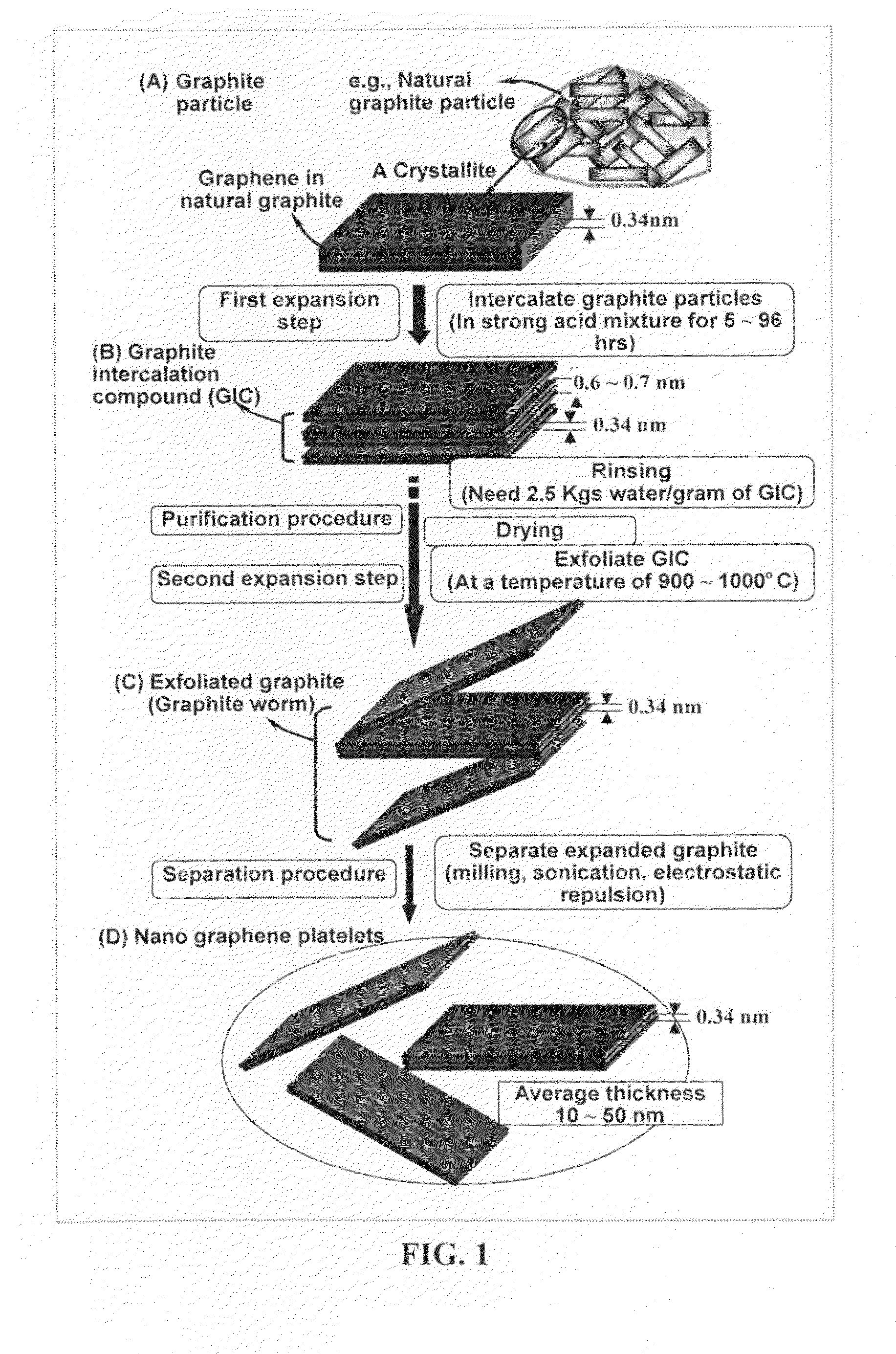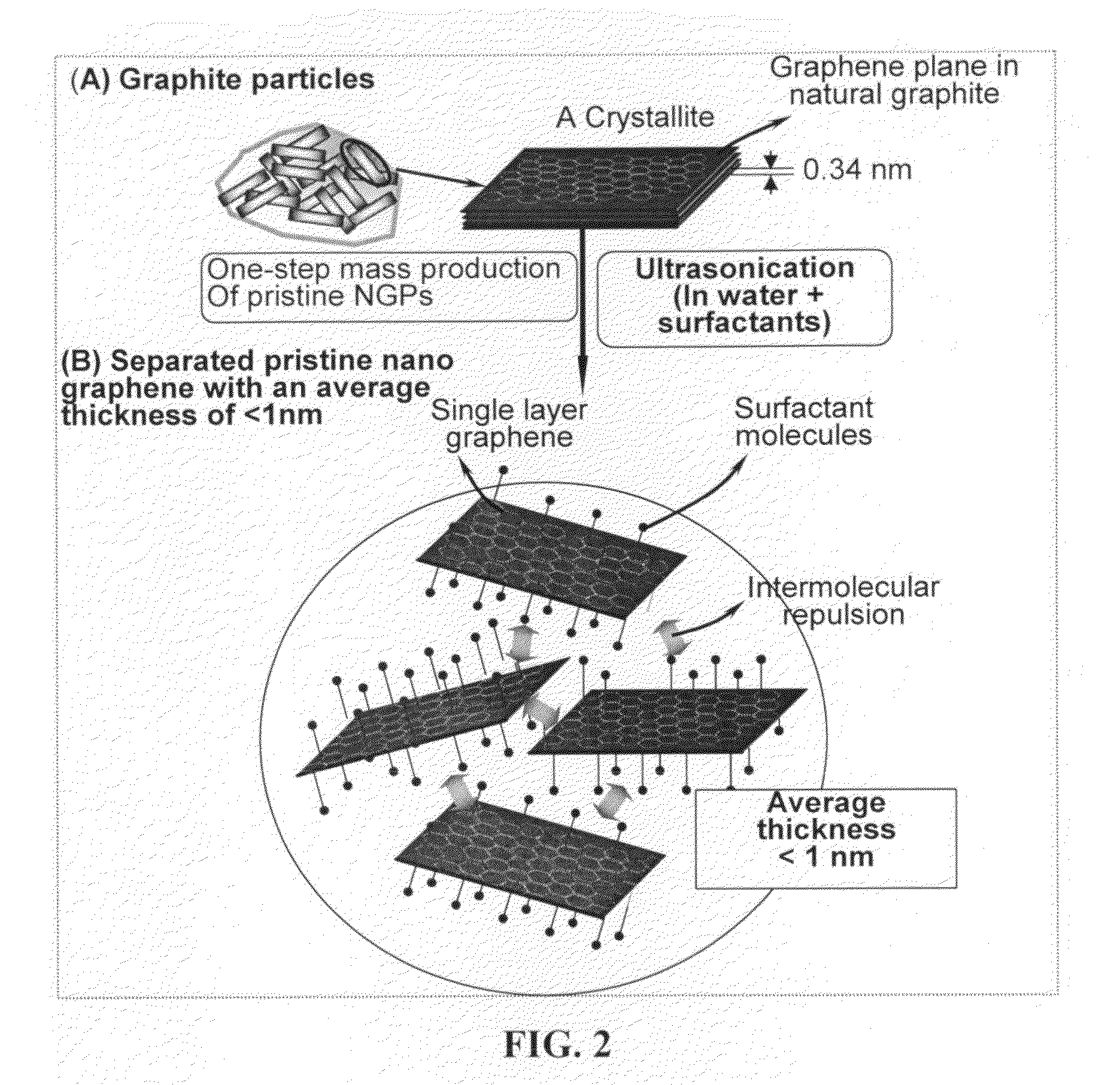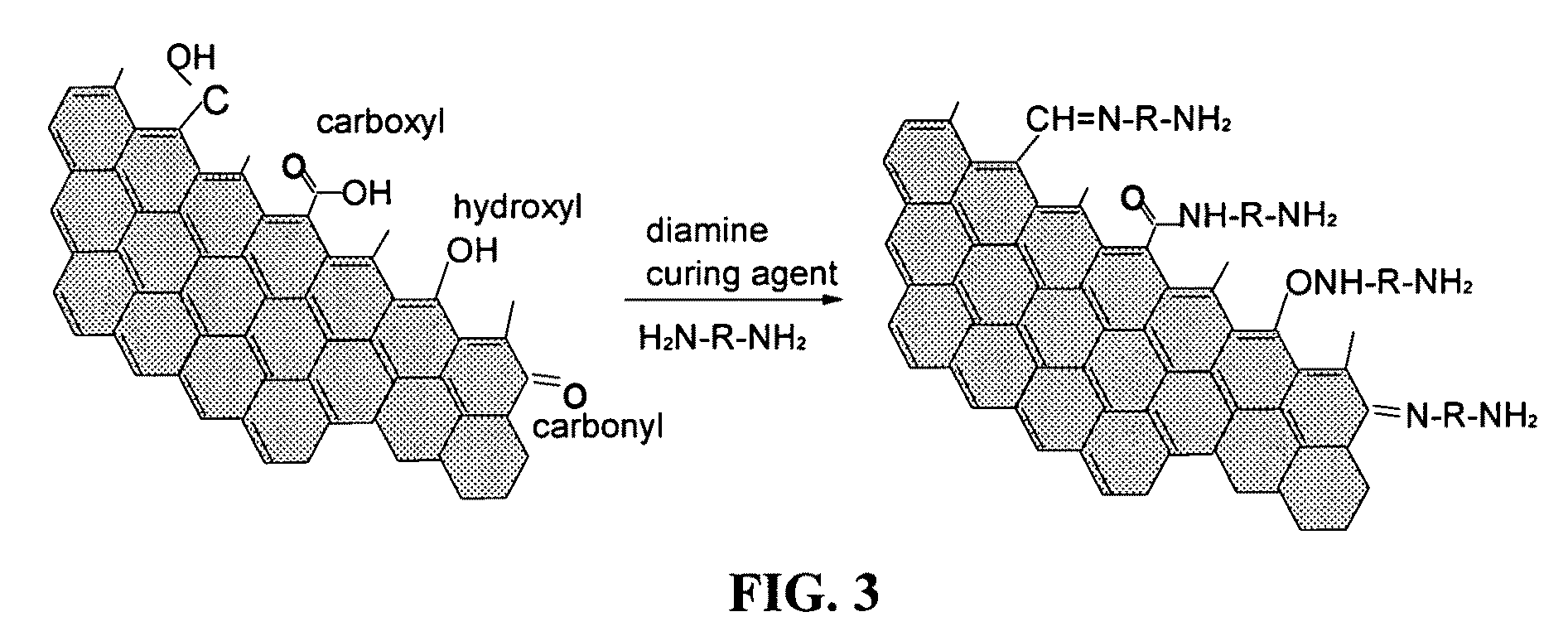Nano graphene-modified curing agents for thermoset resins
a technology of thermoset resins and curing agents, which is applied in the direction of non-metal conductors, other chemical processes, conductors, etc., can solve the problems of large-scale cnt production efforts, high cost of moderately priced multi-walled cnts, and inability to meet the requirements of high-volume polymer composites and other functional or structural applications,
- Summary
- Abstract
- Description
- Claims
- Application Information
AI Technical Summary
Benefits of technology
Problems solved by technology
Method used
Image
Examples
example 1
Pristine Nano-Scaled Graphene Platelets (NGPs) Prepared by Direct Ultrasonication of Natural Graphite Flakes
[0045]Five grams of graphite flakes, ground to approximately 20 μm or less in sizes, were dispersed in 1,000 mL of deionized water (containing 0.1% by weight of a dispersing agent, Zonyl® FSO from DuPont) to obtain a suspension. An ultrasonic energy level of 85 W (Branson S450 Ultrasonicator) was used for exfoliation, separation, and size reduction for a period of 2 hours. The resulting suspension contains a huge number of ultra-thin graphene sheets floating in water. These nano graphene sheets were collected by spray-drying. TEM examination of the dried NGPs indicates that most of these NGPs had 1-5 graphene layers.
example 2
Exfoliation and Separation of Graphite Oxide
[0046]Graphite oxide was prepared by oxidation of graphite flakes with sulfuric acid, nitrate, and permanganate according to the method of Hummers [U.S. Pat. No. 2,798,878, Jul. 9, 1957]. Upon completion of the reaction, the mixture was poured into deionized water and filtered. The graphite oxide was repeatedly washed in a 5% solution of HCl to remove most of the sulphate ions. The sample was then washed repeatedly with deionized water until the pH of the filtrate was neutral. The slurry was spray-dried and stored in a vacuum oven at 60° C. for 24 hours. The interlayer spacing of the resulting laminar graphite oxide was determined by the Debey-Scherrer X-ray technique to be approximately 0.73 nm (7.3 Å).
[0047]Graphite oxide was then inserted into a quartz tube at a temperature of 1,050° C. for 60 seconds under a flowing nitrogen condition to obtain exfoliated graphite oxide. The exfoliated graphite oxide was then ultrasonicated in water (n...
example 3
NGPs from Carbon Nano-Fibers (CNFs)
[0048]A powder sample of graphitic nano-fibers was prepared by introducing an ethylene gas through a quartz tube pre-set at a temperature of approximately 800° C. Also contained in the tube was a small amount of nano-scaled Cu—Ni powder supported on a crucible to serve as a catalyst, which promoted the decomposition of the hydrocarbon gas and growth of CNFs. Approximately 2.5 grams of CNFs (diameter of 10 to 80 nm) were dispersed in water (as in Sample 1). The sample was then subjected to ultrasonication at 20° C. for two hours to effect exfoliation and separation, followed by a mechanical shearing treatment using a rotating-blade device (Cowles). Fine NGPs with an average thickness of 4.5 nm were obtained.
PUM
| Property | Measurement | Unit |
|---|---|---|
| Percent by mass | aaaaa | aaaaa |
| Weight | aaaaa | aaaaa |
| Thermosetting | aaaaa | aaaaa |
Abstract
Description
Claims
Application Information
 Login to View More
Login to View More - R&D
- Intellectual Property
- Life Sciences
- Materials
- Tech Scout
- Unparalleled Data Quality
- Higher Quality Content
- 60% Fewer Hallucinations
Browse by: Latest US Patents, China's latest patents, Technical Efficacy Thesaurus, Application Domain, Technology Topic, Popular Technical Reports.
© 2025 PatSnap. All rights reserved.Legal|Privacy policy|Modern Slavery Act Transparency Statement|Sitemap|About US| Contact US: help@patsnap.com



